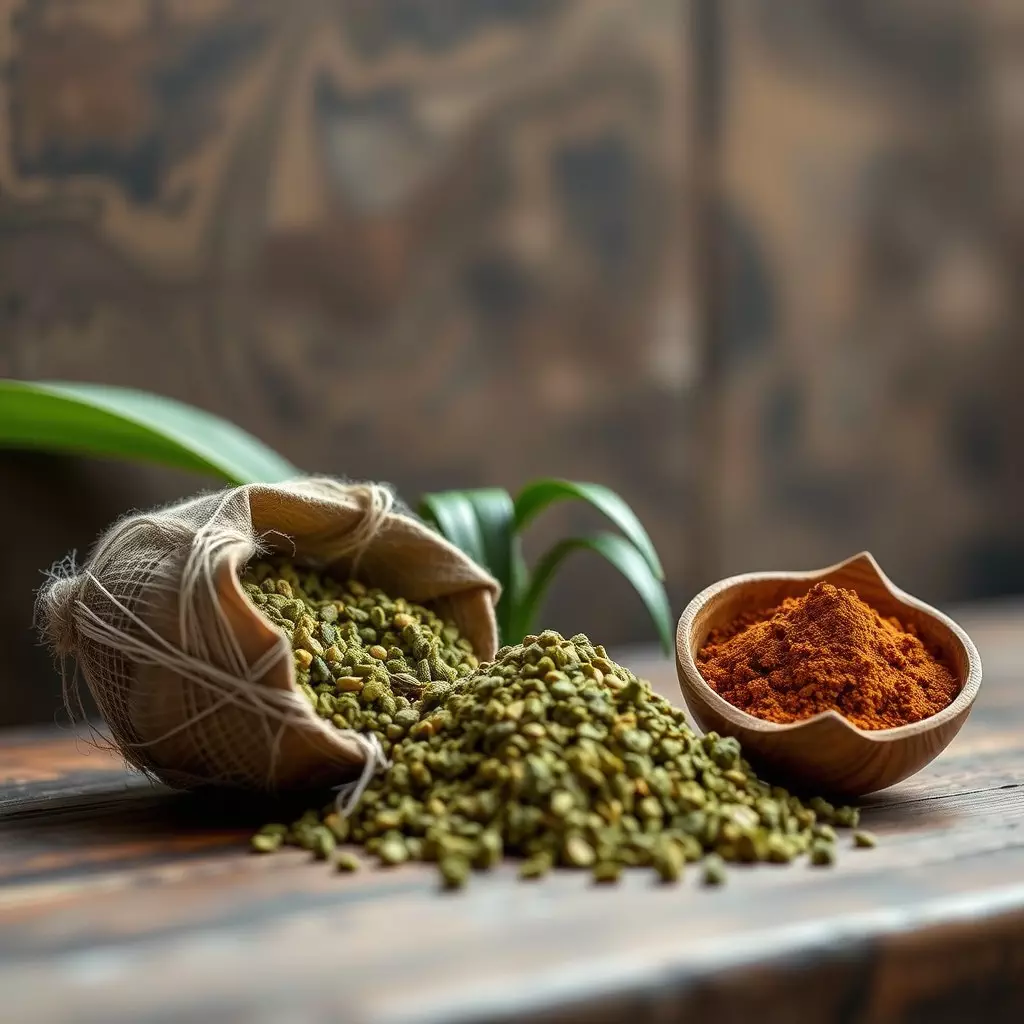Chronic Fatigue Syndrome (CFS) is a complex condition marked by persistent fatigue that traditional rest does not alleviate. The disorder's multifaceted nature includes immune system issues, hormonal imbalances, sleep disturbances, and autonomic nervous system problems. Kratom, an herbal supplement derived from Mitragyna speciosa leaves, has emerged as a potential therapeutic option for some CFS patients. Notably, the Green Maeng Da strain is recognized for its energizing properties, which may help combat fatigue in CFS sufferers without the side effects associated with caffeine or other stimulants. It contains alkaloids such as 7-hydroxymitragynine and mitragynine, which are believed to enhance mood, reduce pain, and provide a sustained energy boost. In contrast, the Red Bali strain is celebrated for its calming effects, beneficial for CFS patients who experience chronic pain or sleep disturbances. Its active alkaloids, including 7-Hydroxymitragynine, Speciogynine, and Paynantheine, contribute to its analgesic and sedative qualities, aiding in muscle relaxation, pain relief, and promoting restful sleep. The choice between Green Maeng Da and Red Bali should be made with the guidance of a healthcare provider due to potential medication interactions and individual variations in response to kratom. Both strains could play a role in personalized CFS management plans, emphasizing the importance of a tailored approach to address the diverse symptoms of CFS.
Chronic fatigue syndrome (CFS) presents a complex challenge for individuals seeking relief from debilitating exhaustion. This article delves into the potential of kratom, a botanical compound, as a management tool for CFS. We explore its mechanisms and effects, comparing popular strains like Green Maeng Da and Red Bali, to provide a nuanced understanding of how kratom might be integrated into one’s CFS management plan. Join us as we navigate the intersection of herbal medicine and chronic fatigue syndrome, with an emphasis on finding safe and effective applications for kratom.
- Understanding Chronic Fatigue Syndrome and the Role of Kratom in Management
- Green Maeng Da vs. Red Bali: A Comparative Analysis for CFS Patients
- Integrating Kratom into Your Chronic Fatigue Syndrome Management Plan Safely and Effectively
Understanding Chronic Fatigue Syndrome and the Role of Kratom in Management

Chronic fatigue syndrome (CFS), often characterized by severe, persistent, and disabling fatigue that is not relieved by rest, impacts a significant number of individuals worldwide. The condition, also known as myalgic encephalomyelitis (ME), can be profoundly debilitating, affecting daily living and quality of life. Understanding CFS involves recognizing its multifaceted nature, which may include immune system abnormalities, hormonal imbalances, sleep disturbance, and autonomic nervous system dysfunction. As research continues to evolve in this complex field, patients and healthcare providers explore various strategies for symptom management.
In this context, kratom has emerged as a potential therapeutic option for some individuals with CFS. Kratom, derived from the leaves of Mitragyna speciosa, is an herbal supplement that contains alkaloids such as 7-hydroxymitragynine and mitragynine, which have been studied for their analgesic, mood-enhancing, and stimulating properties. Within the kratom spectrum, strains like Green Maeng Da and Red Bali are particularly noted for their effects. Green Maeng Da is celebrated for its invigorating and energizing qualities, which may help individuals with CFS combat fatigue. Conversely, Red Bali is renowned for its soothing and calming effects, potentially beneficial for addressing sleep disturbances often associated with the syndrome. Both strains offer distinct profiles that could be leveraged in a comprehensive management plan tailored to an individual’s specific symptoms and needs. It is important for those considering kratom as part of their CFS management strategy to consult with healthcare professionals to ensure safe and effective use, given the potential for interactions with other medications and the variability in individual responses to kratom.
Green Maeng Da vs. Red Bali: A Comparative Analysis for CFS Patients

When managing chronic fatigue syndrome (CFS) through natural interventions, the use of kratom has emerged as a topic of interest among patients seeking relief from their symptoms. Within the kratom spectrum, two prominent strains, Green Maeng Da and Red Bali, offer distinct benefits that can be pivotal in the management of CFS. Green Maeng Da is renowned for its energizing and uplifting effects, which can help CFS patients cope with fatigue and enhance their alertness without the sedative properties often associated with other strains. Its stimulating alkaloids, such as Mitragynine and 7-Hydroxymitragynine, are believed to interact with opioid receptors in the brain, potentially improving mood, reducing pain, and providing a sustained energy boost that is crucial for individuals with CFS.
On the other hand, Red Bali kratom is revered for its soothing and analgesic properties, which can be particularly beneficial for CFS patients experiencing chronic pain or discomfort. The alkaloid profile in Red Bali includes 7-Hydroxymitragynine alongside other compounds like Speciogynine and Paynantheine, which may contribute to its sedative and analgesic effects. These characteristics can aid in the relaxation of muscles, relief from persistent pain, and promotion of sound sleep, all of which are often disrupted in CFS. The balance between Green Maeng Da’s energetic profile and Red Bali’s calming influence may allow patients to tailor their kratom use according to their daily needs, whether it be during an especially fatiguing day or as part of a long-term management strategy. Understanding the nuances between these strains can empower CFS patients to explore kratom as a potential adjunct therapy in managing their symptoms, always under the guidance of a healthcare provider.
Integrating Kratom into Your Chronic Fatigue Syndrome Management Plan Safely and Effectively

When considering the integration of Kratom into your chronic fatigue syndrome (CFS) management plan, it’s crucial to approach it with both caution and an informed perspective. Kratom, a plant from Southeast Asia, has garnered attention for its potential therapeutic benefits, particularly in alleviating pain and fatigue—symptoms commonly associated with CFS. Among the various strains of Kratom, green Maeng Da and red Bali are two popular options that users report for energy and mood enhancement, respectively.
Green Maeng Da is celebrated for its stimulating effects, which can be particularly beneficial for individuals with CFS who experience debilitating fatigue. It’s thought to promote a sense of vitality and improved focus without the jittery side effects associated with caffeine. On the other hand, red Bali Kratom is known for its calming properties, which may aid in managing the stress and anxiety that often accompany chronic conditions like CFS. When incorporating these strains into your routine, it’s essential to start with a low dose to gauge your response and adjust accordingly. Additionally, it’s advisable to consult with a healthcare provider before integrating Kratom into your management plan, as it can interact with other medications and may not be suitable for all individuals. Monitoring the effects and maintaining a consistent dosage, as recommended by a professional, can contribute to a safe and effective experience in managing the symptoms of CFS with Kratom.
managing chronic fatigue syndrome (CFS) can be challenging, but recent explorations into the use of kratom have shown promise for those seeking relief. This article delved into the therapeutic potential of green Maeng Da and Red Bali kratom strains, offering a comparative analysis that may aid CFS patients in their quest for effective management. By integrating these kratom varieties into a comprehensive treatment plan, individuals with CFS can potentially alleviate their symptoms and improve their quality of life. It is crucial to approach this holistically, combining kratom use with other healthy lifestyle practices under the guidance of a healthcare provider. The findings underscore the importance of personalized management strategies for CFS and suggest that green Maeng Da vs. Red Bali kratom could serve as valuable tools in this context.






